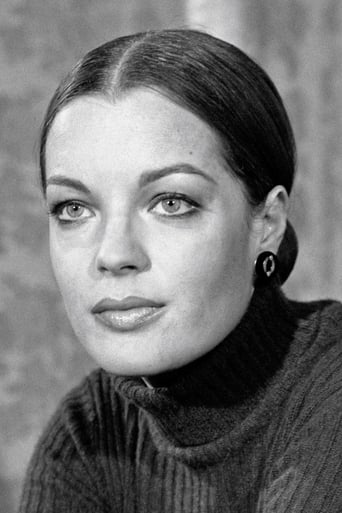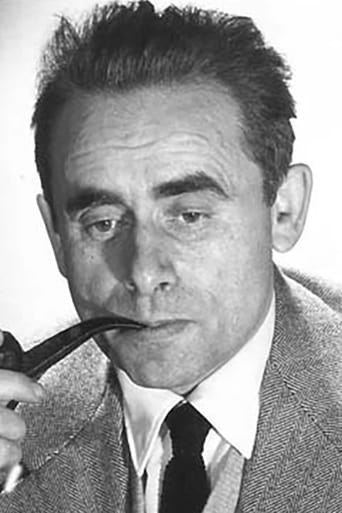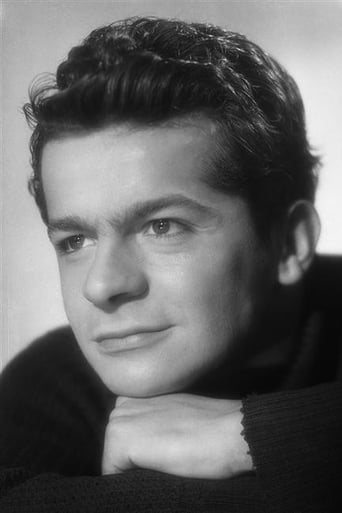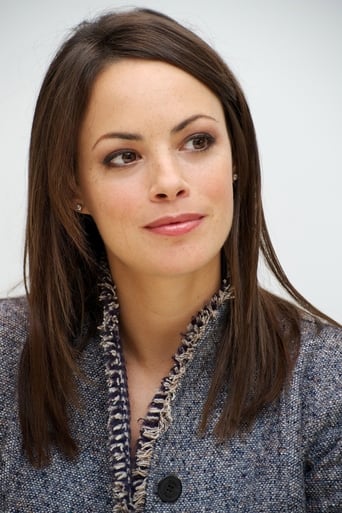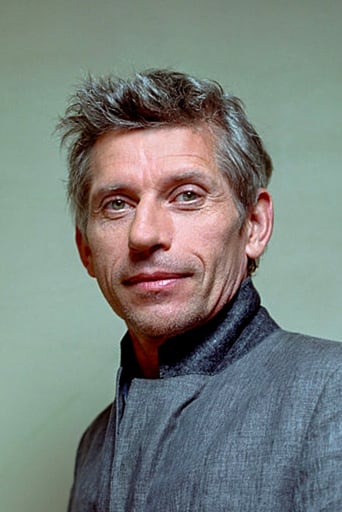Dotsthavesp
I wanted to but couldn't!
Hayden Kane
There is, somehow, an interesting story here, as well as some good acting. There are also some good scenes
Taha Avalos
The best films of this genre always show a path and provide a takeaway for being a better person.
Deanna
There are moments in this movie where the great movie it could've been peek out... They're fleeting, here, but they're worth savoring, and they happen often enough to make it worth your while.
Mark Turner
The list of movies that have been lost over the years is larger than one would expect. Many were lost in fires on the backlots of Hollywood, the incredibly flammable material used to make them making them easy prey to those fires. Some have been lost to time, deteriorating in what is termed vinegar syndrome due to the fact when film canisters are opened containing these films they smell like vinegar, their images gone for eternity. Others are just never found. It is this sort of film that makes up this film.Directed and written by Serge Bromberg it is the tale of a film that began shooting in 1964 led by famed director Henri-Georges Clouzot. American audiences will know his work mainly from two films, DIABOLIQUE in which two women murder one's husband by drowning him in a bathtub and THE WAGES OF FEAR the story of a group of down on their luck men willing to transport nitroglycerine across treacherous roads in South America, later remade by William Friedkin as SORCERER.Bromberg opens the film (as well as discussing it a bit more in depth in one of the extras included on the Arrow release) by talking about his conversation with Clouzot's widow and how he convinced her to allow him to tell the story of the film that never was. While she'd been asked before she was convinced to allow him to do so.Due to his previous successes Clouzot was given the go ahead by Columbia Pictures to shoot the film he dreamed of, INFERNO. The story itself revolves around a French hotelier Marcel (Serge Reggiani), his attractive wife Odette (Romy Schneider) and his obsessive jealousy towards his wife. While it might sound simple enough the plans Clouzot had for it were far from it.Rather than start filming right away Clouzot spent a number of weeks working with the technical crew to create a new film style unseen or used prior to this film. A combination of colors, light, lenses and prismatic effects were played with and viewed building up an arsenal from which he would create his film. Hours and film were used for the express purpose of seeing what could be accomplished on film. The end results are amazing and interesting to watch, accomplishing things that could easily be done now with effects and computers. But the time here is 1963 and these weren't invented yet. To see what he achieved is a thrill to behold for film fans.Weeks were spent doing these test shots. In addition to that Clouzot attempted to plan out what he intended to shoot in minute detail. Storyboards were drawn and deeply intricate directions were listed on diagrams and scripts to be used, providing them with a battle plan that should have resulted in time saved and a well-timed shoot.Good fortune smiled on him with the perfect location to shoot the film. The only problem was that the lake was to be drained to provide power nearby within weeks and the shoot had to be finished by then. The planning should have allowed this to happen. But then Clouzot's own obsession took hold. Shoots and reshoots, other obstacle placed in his way and crews that were left confused by his direction moved the production behind schedule. Eventually occurrences took place that resulted in the film never being finished.But that doesn't mean that the footage shot in the weeks prior to actual filming as well as the footage that was filmed before production shut down were gone. Bromberg has formed the story of what happened into an interesting film, combining that footage with interviews of the crew members that remain as well as certain sequences filmed with stand-ins for the main actors. The end result is a combination of a look at what could have been as well as a lesson in what not to do if you plan on creating a film.All of this makes for an interesting film. But more than that the images captured with that test footage offer a feast for the eyes showing some brilliantly shot images that make you wish the film had been completed. Shot mostly in black and white, the dream sequences, moments where we are placed inside the head of Marcel and in his madness induced jealousy, are shot in color. While the black and white test footage is impressive the color moments are imaginative and beautiful.Arrow Video has released this film in a beautiful hi definition blu-ray format. The extras here show why Arrow is one of the best companies around. They include French cinema expert Lucy Mazdon discussing at length the films of Clouzot and the problems behind INFERNO, "They Saw Inferno" a featurette with unseen material and further insight into the making of the original film, as mentioned earlier an introduction with director/writer Serge Bromberg, an interview with Bromberg, a stills gallery, the original trailer, a reversible sleeve with artwork by Twins of Evil and for the first pressing only an illustrated collector's booklet with writing on the film by Ginette Vincendeau.Arrow has outdone themselves on this one and lovers of French cinema and the films of Clouzot will want to add this one to their collections. If you love movies then this is one to take a look at, seeing not just what was shot but the descent into potential madness that befell the director shooting a film about a man's descent into madness. The end result is a dazzling documentary that delights the senses and is worth watching.
ElMaruecan82
Cinema is tough, there are probably thousands of projects that were as ambitious as "Citizen Kane" or "2001: A Space Odyssey", but we'll never know because they never made it to posterity and a loss can only be measured on the basis of its previous existence. Still, the chronicle of a failed project can be as insightful and inspirational as a success story. And this where begins "L'Enfer", the revolutionary masterpiece… Henri-George Clouzot never made.Now, there is a man who nourishes an interest toward the oddest kind of movie: the lost ones. His name is Serge Bromberg, and I discovered him in the middle of the 90's when he hosted a TV cartoon show named "Cellulo", where I discovered "Flip the Frog" "La Linea" and the UPA cartoons. Now, Bromberg is the head of a firm named Lobster, specialized in the restoration of lost movies or those affected by the passing of time. And the facts are alarming: almost half the cinematic memory is lost.But Bromberg managed to conquer kilometers of lost celluloid. Not only some old Keaton and Chaplin movies were found and restored, but also some old Hitchcock movies from the silent years and the early 30's. And for having discovered such gems as "Juno and the Paycock", "Downhill" or "Mary", I needed to start the review by giving Bromberg the credit he deserves, for a work that doesn't just apply to lost movies but also lost footage. And I just loved the way a simple phone call to Clouzot's widow lead to this great documentary. I won't spoil it but how she finally agreed with the project gives its full meaning to the notion of 'elevator pitch'.And a few years after this encounter, images that have been shut from the public eye for four decades were finally shown, punctuated with interventions from the crew and the recreation of some scenes with Bérénice Béjo and Jacques Gamblin, replacing Romy Schneider and Serge Reggiani. And the enigma is less in the failure of the project than in Clouzot himself, the most classic and critically acclaimed French director whose "Quai des Orfevres", "Wages of Fear" and "Diaboliques", leveraged his reputation as a Master of Thrills, to the stature of Hitchcock.And like Hitchcok, Clouzot was a craftsman whose directing relied on rigorous preparations and technical skills, and when improvisations and experimental creativity were the norm, Clouzot was perceived as old-school cinema. So ego-tickled Clouzot wanted to beat the New Wave surfers on their field, using 60's psychedelic visuals, electronic pop-music and so many unlikely choices from a director born with the century. Hitch said it better "self-plagiarizing is style" so in this statement, lies the early indicator of a predictable defeat.Indeed, "L'Enfer" had everything to succeed: the director's reputation, distributions rights from Columbia Pictures, the stars, and the most devoted team of assistants but if a ship can navigate in the fog, it can't do without a compass. That the project would be interrupted after three weeks of filming should be a school-case for aspiring directors. Passion is crucial but you got to have a clear vision of your project. Clouzot was too busy to think of the 'effects'. It's called the 'dreamer' syndrome.Indeed, Clouzot wanted to make a movie about a jealous husband and shows from his standpoint the obsession escalating until it culminates in mirror effects or use of colors and sound editing you would expect from a 60's directing student. The found footage of the film shows many of these tricks used on the face of Schneider and Reggiani, with the colors reminding of the use of psychedelic effects in Kubrick's "2001" but Clouzot got so wrapped up in his desire to make something new, that he forgot to make something substantial.And Clouzot got so carried away by his own aesthetic ambitions that he spent countless hours of sheer experimentation, constantly delaying the production. For a scene where Reggiani watches his wife water-skiing, the blue of the lake had to turn into red to sustain the image of blood, but he couldn't reverse colors without affecting the skins and dress' colors, so he had to use make-up and dress in opposite colors to keep the effect believable, and everyone played the game, confident that this was going somewhere. Basically, the documentary chronicles the erosion of this confidence.And it seems as Clouzot's assets: money, total control, independence acted as double-edged swords, alienating every day a little more, from the assistants, to the actors. Ironically, the material of the story could have garnered half the means and be shot in less than eight weeks, ironically again; films like "Quai des Orfèvres" or "Wages of Fear" that called for a more meticulous filmmaking were perfectly handled. Yet Clouzot's obsession for expressionist symbolism clouded his abilities, call it, delusions of grandeur, in the end, the Emperor wasn't naked, there was no Emperor at all.I'm tough on Clouzot but let's take an example, Martin Scorsese, with much simpler effects, made the greatest portrayal of obsessive jealousy ever, the film was "Raging Bull", and it didn't rely on any chromatic stunt. Clouzot could have made a 'Raging Bull', but instead he chose the artistic way, giving such a rough ride to Reggiani he left the set calling him schizophrenic. By that time, the project was in agony until Clouzot's stroke put the final nail in the coffin. In 1968, Clouzot made "Woman in Chains", his final film with a more moderate (if not disconcerting) use of psychedelic effect, and a good one, but "L'Enfer" was dead.And Bromberg's documentary is, like the autopsy, one that less revived the film than the soul of Clouzot (who died in 1977), as if the story of the making was more fascinating than the story itself, and Bromberg had the best way to summarize the spirit of his work, quoting "Liberty Valance", when reality becomes legend, print the legend.
dbdumonteil
This is not legend ,this is fact:HG Clouzot was one of the most important French directors of all time .He is the sole Frenchie who enjoys two movies in the IMDb top 250 and that means something for someone who worked before (and a bit) beyond the N.V.The New Wave was one of the reason why HG Clouzot tackled a work which finally almost killed him.He was trashed by the Young Turks and he wanted to prove them that he too was able to produce creative innovative movies.Actually he had nothing to prove for,although he made only eleven movies and a half ,all of those movies (but one :"Miquette Et Sa Mère" ) were stunning achievements ."Manon" ,for instance,was anything but conventional or academic,transferring a novel from the eighteenth century to the Liberation in 1944."Les Espions" was so ahead of its time nobody in France understood it when it was released .His overlooked short from "Retour A La Vie" predated such works as "death and the maiden" by forty years .And I do not even mention his well-known -and sometimes more praised abroad than in his native country- "Corbeau" "Diaboliques "and "Salaire De La Peur" ,all classics everywhere.The Nouvelle Vague could do nothing but put this genius down ;he represented all that they hated : elaborate screenplays,tyrannical actors direction(Serge Reggiani ,who,however ,had worked with "La Clouze" in "Manon" (1949)called it a day after some exhausting weeks and was replaced by Trintignant who reportedly did not do anything), skillful treatment of pictures :like Hitchcock ,he intensively used storyboards (with incredible results:"Reggiani under the bridge" has something downright disturbing) "L'Enfer" ,which was to be the follow-up to "la Vérité" ,was intended as something new ,at least in its form ,for as a voice over tells us ,the story is trite :jealousy is a hackneyed subject which had been treated many times ,notably brilliantly by Luis Bunuel ("El").Reality would be filmed in austere black and white -all Clouzot's movies but two are in B&W- whereas phantasms would be given the color treatment ;although the story was filmed on location in Auvergne ,the pictures were to be re-worked in the studio .And some of them are particularly impressive .Romy Schneider was perhaps never filmed as she was in this movie,in scenes which were risqué for 1963 :tied naked to the rails while a train is a coming,fooling around (in her husband's mind) with all the men around and even her best friend (Dany Carrel) -homosexuality was not a new subject for HGC :there was a lesbian in "Quai Des Orfèvres" (1947)."L'Enfer" became really "L'Enfer" .HGC 's ambitions were finally too much for him (and his actors;HGC was not a nice director to be directed by:in her memoirs "La Nostalgie N'Est Plus Ce Qu'Elle Etait " ,Simone Signoret wrote "I had a rough time of it " about "Les Diaboliques" ) and he gave up.Some of the innovations were used in the follow-up "La Prisonnière " (which was his final work in 1968) particularly in the scenes in Laurent Terzieff's apartment and in Elisabeth Wiener's psychedelic visions (not unlike those of Keir Dullea in "2001").It was 1994 before Claude Chabrol made a movie based on HGC's screenplay.Of course his work was not what Clouzot intended to do (how could it?)but it was faithful to its spirit and generally looked upon as one of Chabrol's finest achievements.Like this? try this....."Carnet De Naufrage" ,a documentary depicting the movie "La Fleur De L'Age "(1947).Marcel Carné was never able to see it through.Intended to be the follow up to "Les Portes De La Nuit" ,it was never finished and put an end to the Carné/Prévert collaboration.
Bob Taylor
Documentaries rarely come more fascinating than this. Clouzot's lost masterpiece, abandoned when the director suffered a heart attack during the interminable shooting of it. The interviews with Catherine Allégret, Costa Gavras and other participants in Clouzot's project are informative, particularly on the subject of the experimental sound track and the innovations in use of film stock that turned water red. But it is the human drama, not the technological wizardry that fascinates here. Clouzot simply took on too much: writing, directing and producing, as well as overseeing all aspects of casting, music, art direction... The American studio gave him too much money and power for this project, and this almost destroyed him.Jacques Gamblin and Bérénice Bejo take over the parts Reggiani and Schneider played, and they flesh out the story well enough. (See Cluzet and Béart in Chabrol's remake for a really great experience.) I went to see the footage with Romy Schneider, and I wasn't disappointed. She was the most beautiful of European actresses, and Clouzot's camera adores her. Romy smoking, Romy with a blue tongue, Romy trussed naked on a train track, Romy being followed through the town by Reggiani. Rest assured, I will be getting the DVD.

